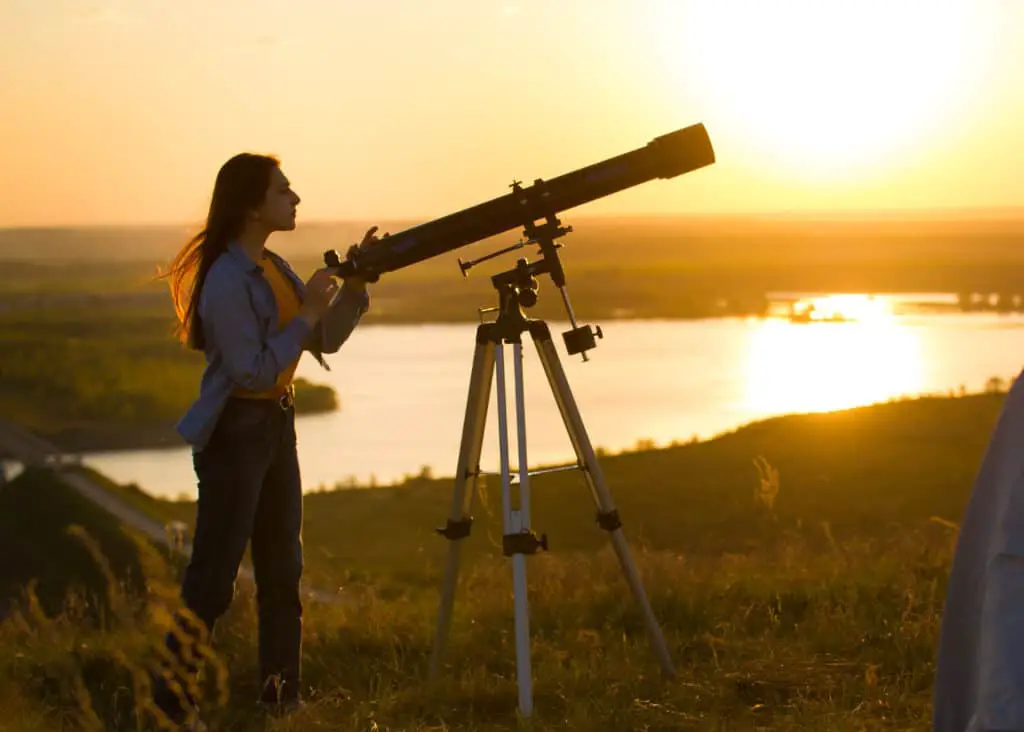When it comes to observing the world around us, we sometimes need tools to assist our vision. One of the most important tools for microscopy and other vision-related fields is the parfocal objective lens. But what is this and what does it do?
A parfocal objective lens is a lens that stays in focus despite changes in magnification. Most microscopes require a complete refocus when the lens or magnification is changed. With parfocal lenses, there might be a slight error in focus, but it will most likely be too slight to be significant.
Parfocal lenses are used in microscopy, it’s true. However, there are other fields where they come in handy as well, like photography. These lenses play a major role in many fields, and we have learned a lot by using them.
Parfocal Objective Lenses in Microscopy
As mentioned before, parfocal microscope objectives remain in focus even when the magnification is changed. Obviously, it is not perfect and there will be small errors in magnification, but these errors are small enough that they are nearly imperceptible.
Parfocal objective lenses are nice because it means you can change magnification and it will have little to no effect on your scope’s focus. Microscopes without parfocal lenses have to be refocused when the magnification is changed which can sometimes take a while. That is one headache you won’t ever have to worry about again, especially since most newer microscopes now come with parfocal lenses.
This does, of course, differ slightly by microscope. A parfocal compound microscope, for example, requires you to change objectives sequentially from lowest to highest (ex. 10x to 40x to 100x). If you do it this way, you will only ever have to twist the focus knob very slowly.
If you were to jump from the lowest objective to the highest objective, you would probably have a harder time readjusting the focus. Stereoscopes are, again, different. If you were to start at the highest magnification on a parfocal stereoscope, you would be able to zoom out to any lower setting and not have to readjust the focus.
If you’re interested in a parfocal objective lens and are wondering where you can buy one, you’re in luck. Pretty much all new microscopes are being manufactured as parfocal, so wherever you look you will probably have plenty of luck.
Telescopes
Parfocal objective lenses in telescopes are essentially the same as in microscopy. Like a parfocal stereoscope, you can adjust the eyepieces in any order without needing to refocus the telescope. You can adjust from low to high or high to low and it should stay focused. Also like the microscope, most new telescopes are being manufactured with parfocal lenses and you should not have a hard time finding one, though they can be fairly expensive. Here are a few nice models to consider:
Orion SkyScanner 100 Reflector
The Orion SkyScanner is a sturdy telescope built for beginners. It affords you a good look at nebulas, brighter galaxies, planets, and the moon. It has an aperture of 3.94” (10 mm), a focal length of 15.75″ (400 mm), and 10 mm and 20 mm eyepieces. It has a good range of useful magnification, the lowest being 14x and the highest being 200x. It is a compact, easy-to-use telescope and comes assembled right out of the box.
This particular model is only a desktop model meaning it does not have a tripod. However, it also comes equipped with Starry Night software designed to help you pinpoint your viewing targets. It costs somewhere around 180-190 dollars on Amazon.

Celestron StarSense Explorer LT 114AZ
The Celestron StarSense is a good telescope for not only beginners but intermediates as well. Assembly time takes about 20 minutes, which is not bad if you want to spend more time observing the sky. The StarSense has an aperture of 4.49″ (114 mm), a focal length of 39.37″ (1,000 mm), and is supplied with 10 mm and 25 mm eyepieces. It boasts a magnification range from 16x to 269x. This telescope is remarkably simple to set up and align and it suggests targets for you to look at, plus it provides a good intro into astrophotography. One of the only downsides is that it lacks a computerized mount. Despite that, however, it is a solid choice if you are getting into stargazing! You can buy it on Amazon.
Meade ETX90 Observer
The Observer is easy and quick to calibrate, making it easy for first-time users. While it does have a slight reduction in the optics’ brightness, the optics are still excellent, as is the GoTo database. With an aperture of 3.54″ (90 mm), a focal length of 49.21″ (1,250 mm), and 9.7 mm and 26 mm eyepieces, the Observer might be just what you need. Its highest magnification strength is 180x and it is extremely easy to assemble. This telescope is on the more expensive end and can be found on Amazon for about 500 dollars.
Parfocal Objective Lenses in Photography
As far as cameras go, there are two main different types of lenses: the parfocal and the varifocal. The varifocal lens has a variable focal length which means the focal length changes as the magnification and focuses change. Varifocal cameras allow you to adjust your focus to whatever your subject of interest is. Basically, a varifocal lens gives you a bit more flexibility and variety. The parfocal lens, like a telescope eyepiece or a microscope objective lens, does not change focus when the lens zooms or the magnification and focal length change.
Parfocal lenses are important. The obvious first reason for this is their focusing capability. Parfocal lenses have made it easier to zoom in (whether with a camera or a microscope) and get a better view. Photographers also have to deal with lens breathing less when using a parfocal lens. Lens breathing happens when a varifocal lens zooms in and the edges of the frame then shift in and out. Since parfocal lenses stay focused during and after zoom, this is no longer an issue.
Cinematography
Parfocal lenses are used in movies as well. They would have to be for movies to be any good, after all. Filmmakers use parfocal lenses to keep the camera in focus while they’re doing zoom shots. Without parfocal lenses in cinematography, it would be virtually impossible to get clear shots while filmmaking.
If the camera is moving plus the subjects and actors are moving, there would be too many variables getting in the way of a clear view. Parfocal lenses allow filmmakers to zoom in on moving subjects without getting blurry shots.

